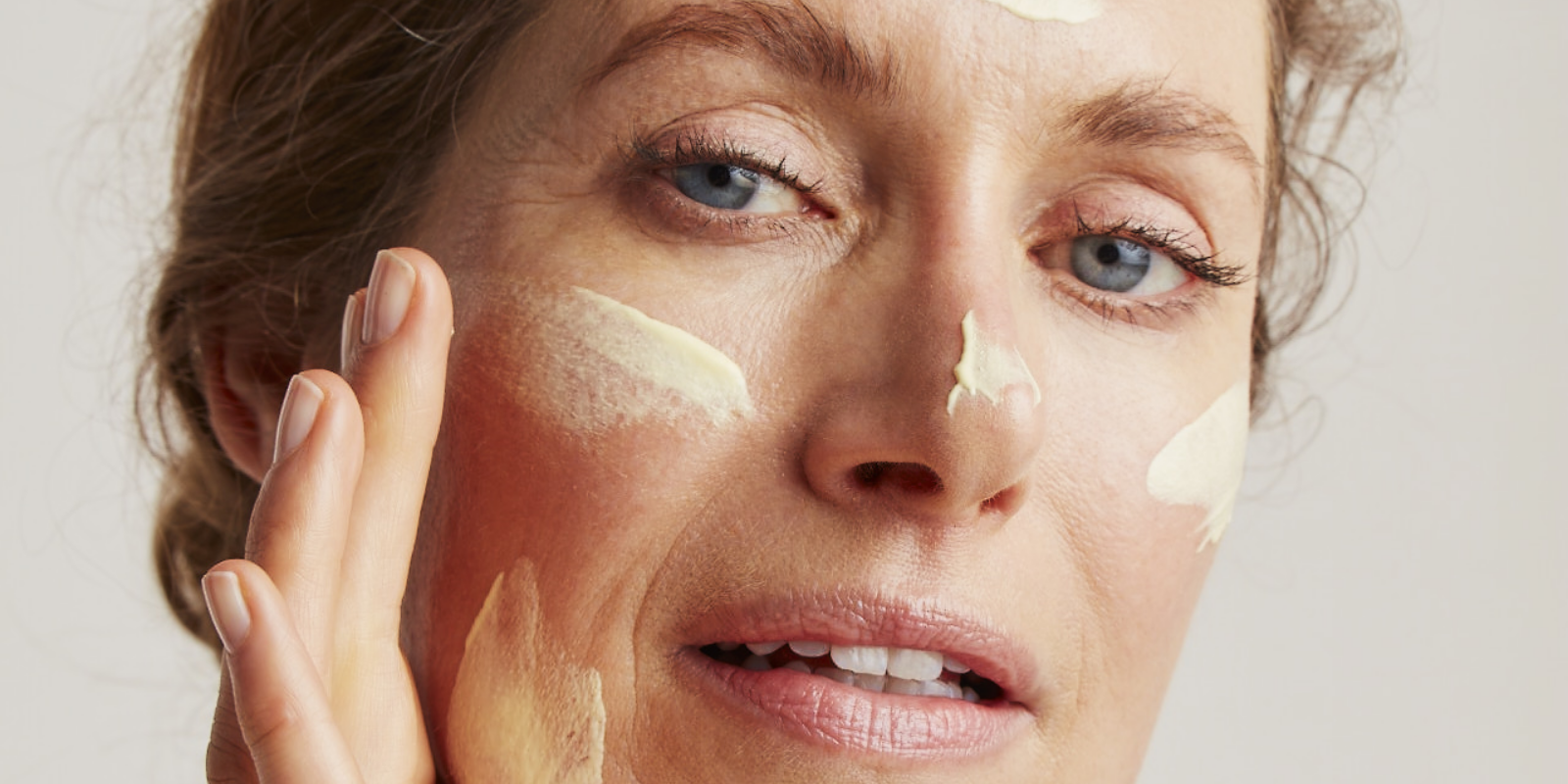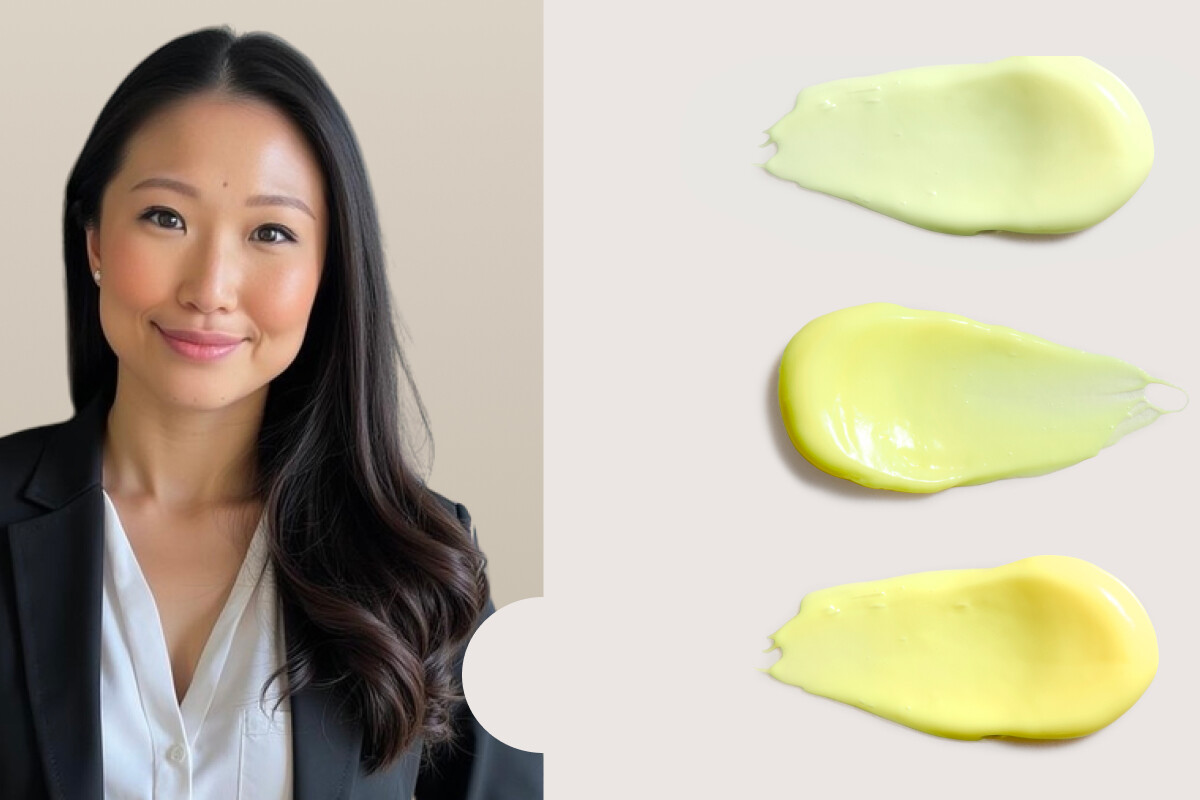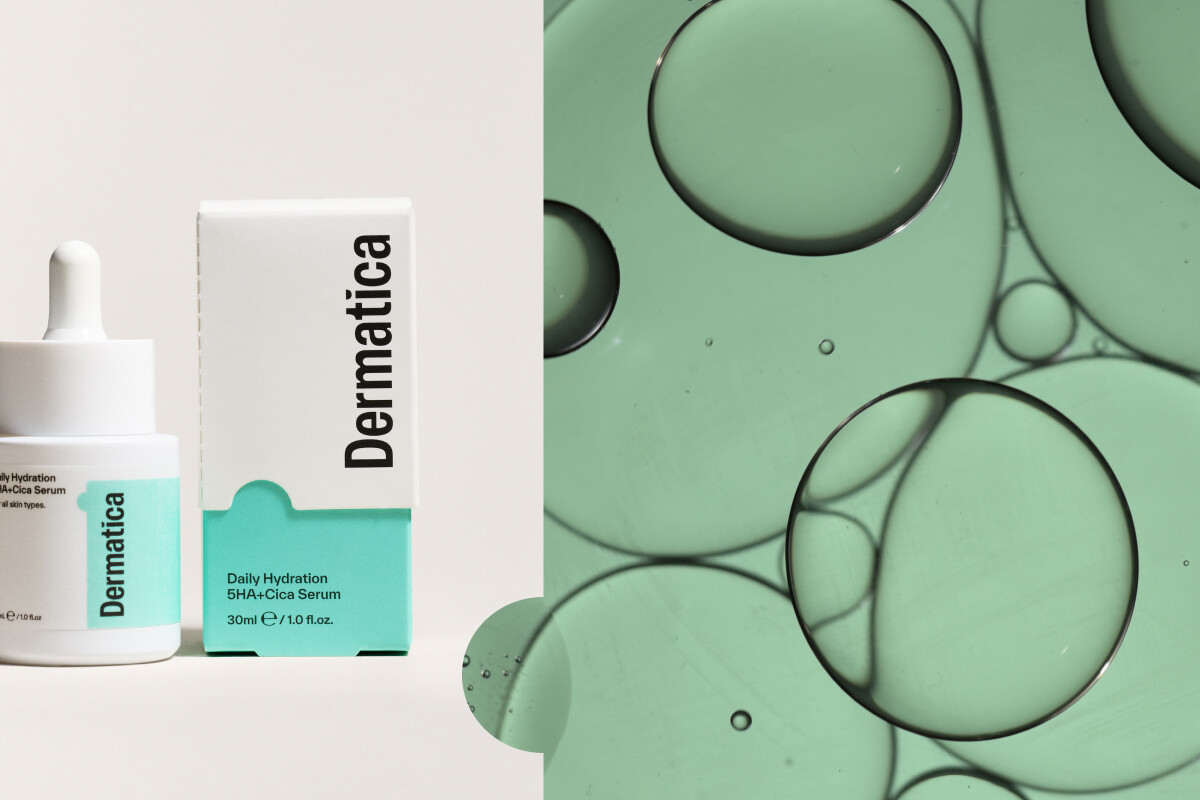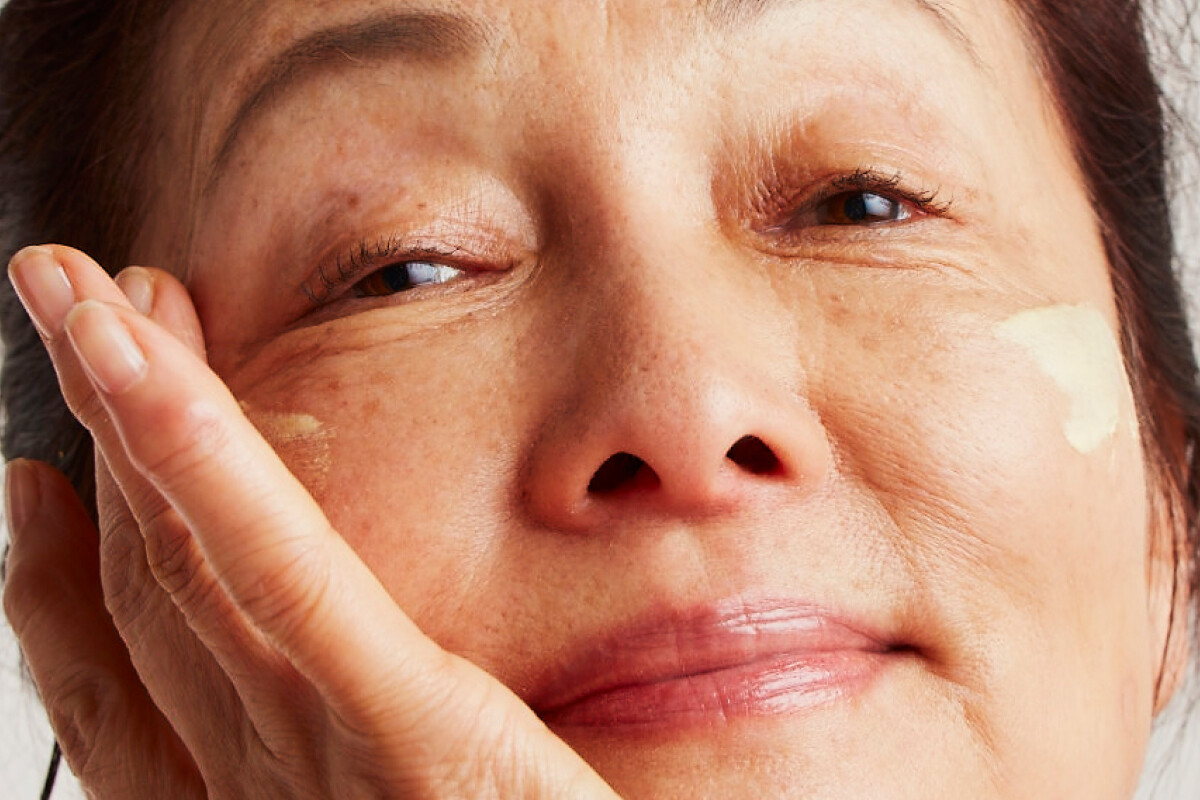We all know how important sun protection is, but are you worried you might already have sun damage on your skin? Whether it’s sunburn, sunspots, freckles, dark spots – it’s actually incredibly helpful to be able to spot what UV damage looks like. First and most importantly, because (we don’t mean to scare you but) you’ll want to check if it’s skin cancer, and it’s much better to spot it early. Second, sun exposure is the leading cause of early skin ageing.
So in this post, you’ll learn the common signs of sun damage, explain how it affects your skin at a deeper level, and touch on some advice for addressing any damage that you may have already experienced.
What Does Sun Damaged Skin Look Like?
Sun damage to the skin can come in different forms. How it manifests depends on how severe the damage is, how long your skin has been exposed, and your individual skin type. Here are some common signs of sun damage.
Sunburn
All of us have seen or experienced sunburn in our lives. When we’ve had a little too much time outside, and our skin suddenly looks red and inflamed. Or, if you’re unlucky and it’s severe, you might get some blistering or peeling, too. Your skin may also feel warm or hot to the touch, and it can be tender or sometimes really quite painful. And as you already know, it happens when you’re exposed to ultraviolet radiation (UV) for too long, either from being out in the sun or from a more artificial method like tanning beds.
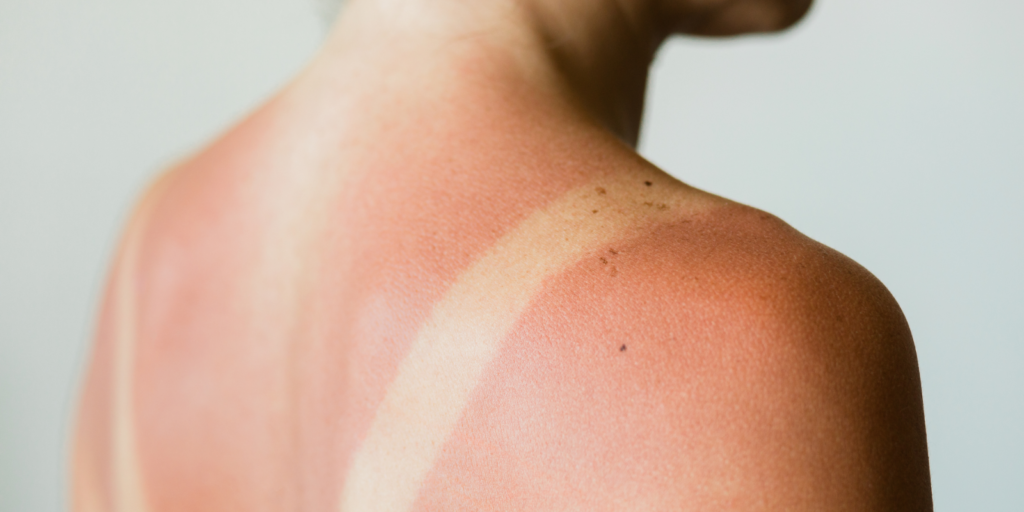
Sunburn is the first sign of visible sun damage, and often can – in many cases – lead to the conditions we’ll talk about below. It’s also important to know that sunburn can increase your risk of skin cancers like malignant melanoma. That’s why we can’t stress enough how important it is to apply broad-spectrum sunscreen every day, as wearing it can decrease your risk of skin cancer by up to 40%. (1) Whenever you can, try to avoid the times of the day when the sun is at its hottest (between 11am – 4pm) and wear UV protective clothing. (2)
Hyperpigmentation (Dark Spots)
Sun exposure can cause many people’s skin to produce dark spots, which are also known as sun spots, age spots or liver spots. You’ll often notice them on the face, backs of the hands, shoulders and arms, because these areas are exposed to sunlight more often.
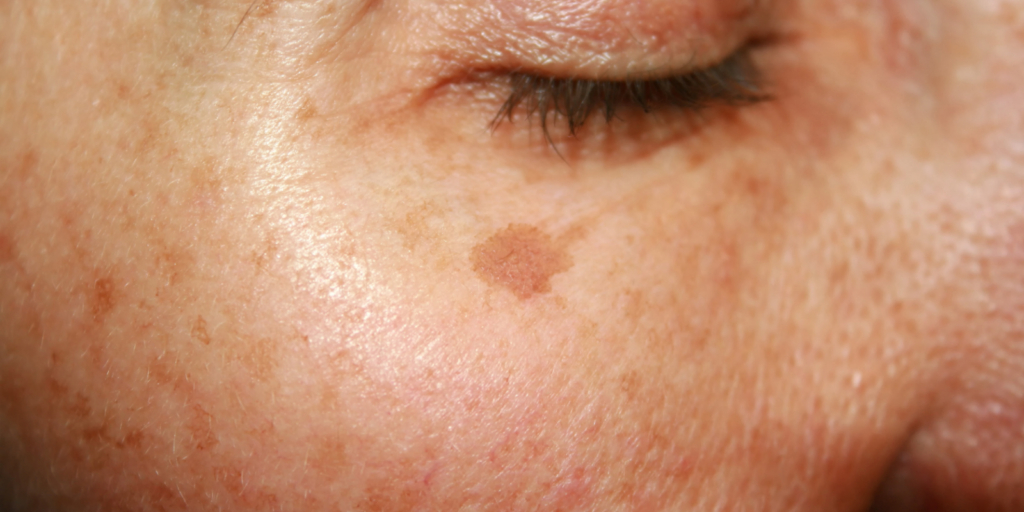
Dark spots can be small and round, or larger and irregular. These patches are flat, not raised – and although they are visible, they won’t cause you any harm, nor are they a sign of skin cancer. However, if your dark spots seem to change colour or they become bumpy or raised, you should check with a dermatologist so they can rule out any risk of skin cancer. (2)
Wrinkles and Fine Lines
Wrinkles and fine lines are a normal sign of ageing, and the reality is that unless we use cosmetic procedures, we will all get them – no matter how much we look after our skin. However, sun exposure does affect how quickly they appear. This is because UV radiation penetrates deep into the skin and damages your collagen stores, which is the vital protein that keeps your skin looking young. It’s worth noting that, although it’s not the only cause – sun damage is the leading cause of premature skin ageing. (3)
Freckles
Some people naturally have a smattering of freckles on their skin. Some even draw them on like constellations with an eyebrow pencil or liquid eyeliner pen. Freckles are small brown spots that darken after sun exposure, and are technically a form of sun damage. Like hyperpigmentation, they are usually flat, not raised, and aren’t harmful to your health. However, they’re more common in people with lighter skin, so if you do have them – a dermatology expert will probably tell you to be even more diligent with your sun protection. (1)

Rough, Dry, or Leathery Skin
UV radiation damages your skin barrier and lowers your skin’s ability to hold onto moisture. So, if you’ve been exposed to the sun unprotected over and over again, your skin can become dry, flaky, and there may be scaly patches that feel rough to the touch. In some cases, your skin can also take on a thick, leathery skin texture. (4)
Redness and Dilated Blood Vessels
Unfortunately, sun damage can also weaken your blood vessels, causing them to permanently dilate (widen) and become more noticeable. These broken capillaries cause redness and visible spider veins, especially for those with lighter skin. You’ll usually notice this on the cheeks and around the nose. (5)
Melasma
Melasma looks like larger, darker patches of skin, usually on the forehead, cheeks and upper lip. Although melasma isn’t necessarily caused by the sun alone, exposure to sun and high temperatures can trigger it to spread and darken, which can be very frustrating as it’s not a straightforward condition to treat. Melasma is more common in women. It often appears during or after pregnancy, or when taking hormonal contraceptives like the contraceptive pill. (6)
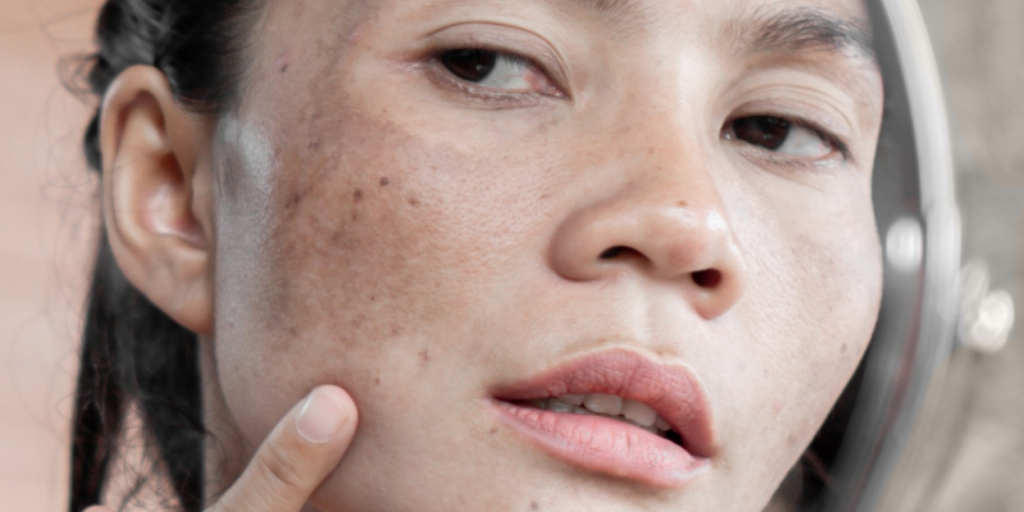
Solar Elastosis
You may have solar elastosis if you have yellow-ish, thicker and/or bumpy skin that’s lost its bounce and elasticity. If you do have it, it’s most likely to appear on the neck and face, and have a sagging or droopy appearance. Like most of the severe conditions we’ve listed here, it’s caused by long-term damage to your skin from the sun, as the radiation breaks down the natural collagen and elastin fibres in your skin. (7)
Prevention and Treatment Options
If you have sun damage, the good news is you can protect your skin from more harm and improve how it looks. And it’s never too late to start. (8)
First, always wear broad-spectrum sunscreen with at least SPF30 everyday – whether it’s sunny, overcast or even raining. Ultraviolet light (both UVA and UVB rays) can penetrate through clouds and windows to your skin, so sunscreen, protective clothing and shade during peak daylight hours (11am-4pm) is a must.
Already have visible sun damage? Don’t worry, you’re not alone – these conditions are common. For the most effective treatment, we recommend speaking to a dermatology expert like us here at Dermatica. We choose topical creams that will treat your particular condition, and remove the guesswork by personalising the right ones to suit your skin.
Some examples of topical creams a dermatology expert might recommend are Vitamin C, prescription retinoids, hydroquinone, tranexamic acid, hyaluronic acid, glycolic acid, niacinamide and moisturisers with ceramides and peptides.
Read more about effective topical creams for sun damaged skin.
Remember, if you notice any uneven colouring, or change in shape or size to your condition, check with a dermatologist to make sure it’s not skin cancer.
Protecting your skin with sunscreen comes first. Then, if you’re ready to treat damaged areas, get personalised treatment from a dermatology professional if this option is available to you. Letting an expert analyse your skin, and recommend the right treatment for you, means you don’t need to go through the rigmarole of trying products that don’t work. And, with an expert by your side at every step of your skin journey, you can minimise the effects of photoageing and keep your skin healthy for years to come.
Find out more about the treatments we mentioned on our website.
References
1. Sander M, Sander M, Burbidge T, Beecker J. The Efficacy and Safety of Sunscreen Use for the Prevention of Skin Cancer. Canadian Medical Association Journal [Internet]. 2020 Dec 13;192(50):E1802–8. Available from: https://www.ncbi.nlm.nih.gov/pmc/articles/PMC7759112/
2. Guerra KC, Crane JS. Sunburn [Internet]. PubMed. Treasure Island (FL): StatPearls Publishing; 2023. Available from: https://pubmed.ncbi.nlm.nih.gov/30521258/
3. Thawabteh AM, Jibreen A, Karaman D, Thawabteh A, Karaman R. Skin Pigmentation Types, Causes and Treatment—A Review. Molecules [Internet]. 2023 Jun 18;28(12):4839. Available from: https://www.mdpi.com/1420-3049/28/12/4839
4. Praetorius C, Sturm RA, Steingrimsson E. Sun-induced freckling: ephelides and solar lentigines. Pigment Cell & Melanoma Research. 2014 Mar 3;27(3):339–50.
5. Charoenchon N, Rhodes LE, Nicolaou A, Williamson G, Watson REB, Farrar MD. Ultraviolet radiation‐induced degradation of dermal extracellular matrix and protection by green tea catechins: a randomized controlled trial. Clinical and Experimental Dermatology. 2022 May 18;47(7):1314–23.
6. Basit H, Godse KV, Al AM. Melasma [Internet]. Nih.gov. StatPearls Publishing; 2023 [cited 2024 Aug 15]. Available from: https://www.ncbi.nlm.nih.gov/books/NBK459271/
7. Pain S, Berthélémy N, Naudin C, Degrave V, André-Frei V. Understanding Solar Skin Elastosis-Cause and Treatment. Journal of Cosmetic Science [Internet]. 2018;69(3):175–85. Available from: https://pubmed.ncbi.nlm.nih.gov/30052192/
8. Pfeifer GP. Mechanisms of UV-induced mutations and skin cancer. Genome Instability & Disease. 2020 Mar 19;1(3).
Ash Sharma
Dr Ashwin Sharma is a medical doctor and writer with a particular interest in health technology, artificial intelligence and medical weight loss. He completed his training at the University of Leicester and Imperial College London, and has since been exploring the intersections of medicine, technology, and communication.
Related Posts
October 30, 2025
0 Comments11 Minutes

